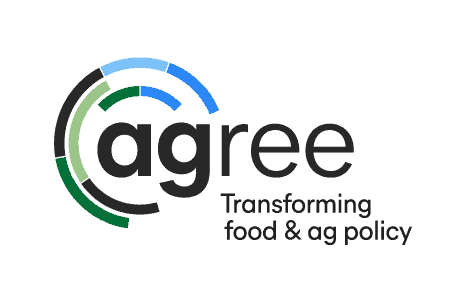Risk Management for Underserved Crops
9 January 2020In late 2019, the AGree Economic and Environmental Risk Coalition hosted U.S. House and Senate briefings to propose changes to the Whole Farm Revenue Protection (WFRP) policy and the Noninsured Disaster Assistance Program (NAP) that would better support young farmers and specialty crop producers who have difficulty accessing conventional crop insurance.
As an agent actively selling Whole Farm Revenue Protection in Michigan, I have witnessed this policy save farms and transform grower livelihoods. Whole Farm Revenue Protection guarantees a producer can survive volatile agricultural markets by creating a price floor, or a guaranteed income. Guaranteed income in exchange for labor is something the average American is accustomed to; most Americans work for a salary or set hourly wage. Farmers are dependent on weather, which often dictates the yield of their planting season, and the market, which dictates price.
It’s hard to put into words what it means to hand a grower a check that will save their operation because their WFRP Policy guarantees them a minimum income. This was especially true in 2019, as farmers grappled with an incredibly wet spring and tariff wars out of their control.

Whole Farm Revenue Protection protects farmers from weather and market variability by guaranteeing a minimum income.
I shared this forum with three other panelists—Jonathan Coppess, Cara Fraver, and Scott Marlow —who detailed concerns about the operation of these programs and possible solutions. Their comments included the following observations:
- Participating in NAP and WFRP is often perceived as unachievable due to intense reporting demands. The application process alone requires listing and providing copies of all contract-pricing for any product grown, intense reviews of producers’ tax filings, and a review of accounts received and payable. Since both NAP and WFRP target diverse operations that grow many types of produce, satisfying the application and reporting demands can be difficult for farmers. Streamlining the reporting process would go a long way in encouraging farmer participation.
- USDA should develop a WFRP-type policy within NAP to help young farmers build their reporting history. Young, beginning farmers cannot purchase Whole Farm Revenue Protection until they have three years of Farm Income Tax filings on a Schedule F (think of this as a farm W-9). Creating an “on ramp” within NAP to help farmers qualify for WFRP would better integrate these two programs and increase their overall efficacy.
- Validating the price that producers will receive earlier in the reporting process would build producers’ confidence. When insured with a WFRP policy, producers are guaranteed a certain percentage of the market-based value of their crop. However, since market prices change throughout the year, farmers sometimes receive less when receiving a claim than they were originally quoted.
In addition to these improvements, several issues and concerns could be resolved with better agent training. Despite the fact that Whole Farm Revenue Protection is a challenging policy for an agent to write, there is no requirement for agents to have specialized training in this policy. In order to write this policy, a Crop Insurance Agent is required to review and verify farmer tax documentation and contract requirements, becoming an accountant and auditor with no additional training provided.
If agents were better educated on Whole Farm Revenue Protection and better able to guide producers through the life cycle of the policy, both agents and farmers would realize the requirements are being met by nearly all producers to begin with. This is because farmers know their production history, their price history, and their contract pricing. They could probably provide this information informally over a cup of coffee. However, because agents have not had proper training, they see a policy that requires intense documentation with little reward, so they don’t actively sell the policy.
I have no doubt that Whole Farm Revenue Protection and the Noninsured Disaster Assistance Program are important to the survival of mid-sized, diversified, and beginning farmers. With positive changes, we will continue to see an increase in producer enrollment that would improve agricultural risk management and create a cascade of benefits to the agricultural sector.
